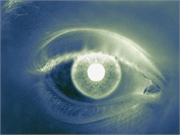Higher PM2.5 concentration also associated with thinner macular ganglion cell-inner plexiform layer
TUESDAY, Dec. 3, 2019 (HealthDay News) — Exposure to ambient air pollution is associated with a higher risk for glaucoma and adverse structural characteristics of the disease, according to a study published in the November issue of Investigative Ophthalmology & Visual Science.
Sharon Y.L. Chua, Ph.D., from the University College London Institute of Ophthalmology, and colleagues examined the correlation between air pollution and glaucoma using ophthalmic measures and ambient residential area air quality data for 111,370 U.K. Biobank participants. The air quality exposure of interest was particulate matter with an aerodynamic diameter of less than 2.5 µm (PM2.5).
The researchers found that the likelihood of reporting a diagnosis of glaucoma was increased for participants residing in areas with higher PM2.5 concentration (odds ratio, 1.06). There was also a correlation noted for higher PM2.5 concentration with a thinner macular ganglion cell-inner plexiform layer (GCIPL; β = −0.56 µm). The investigators observed a significant dose-response relationship between higher levels of PM2.5 and thinner GCIPL. No clinically relevant correlation was seen between PM2.5 concentration and intraocular pressure.
“The direction of the relationships between PM2.5 and both glaucoma and associated retinal layer thicknesses indicates that higher exposure to PM2.5 may make the GCIPL more vulnerable and increase the risk of glaucoma,” the authors write.
Copyright © 2019 HealthDay. All rights reserved.








